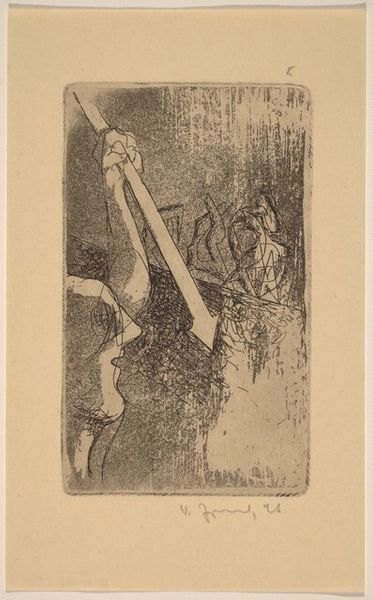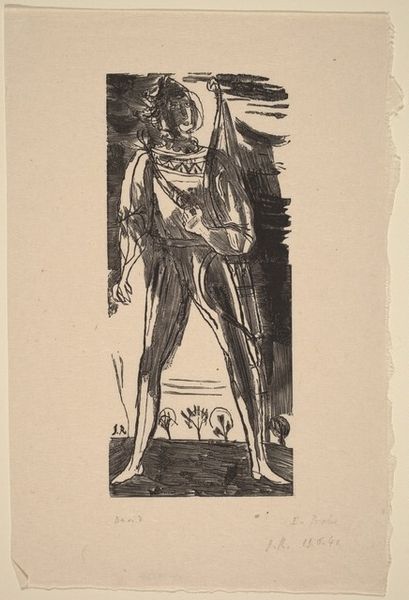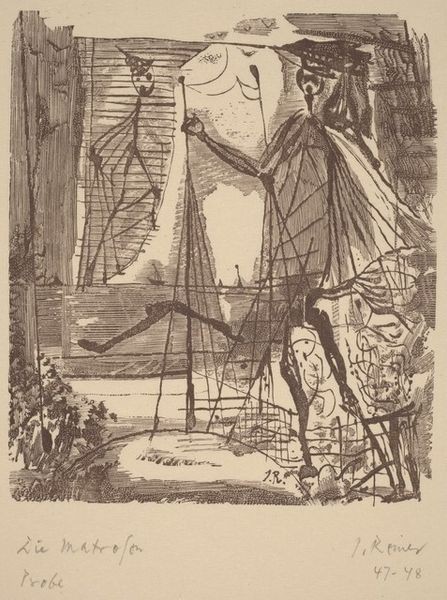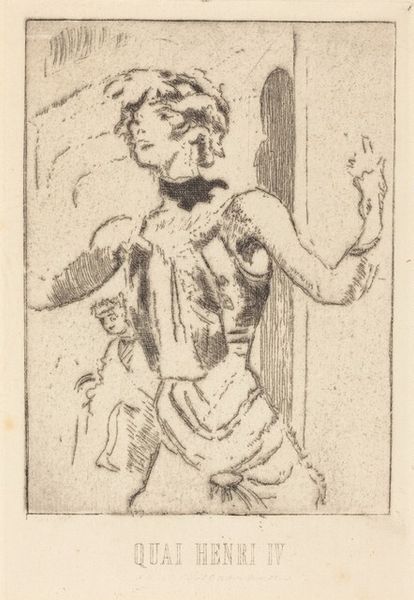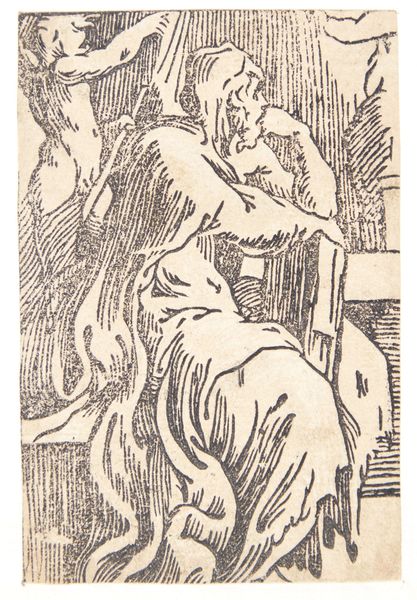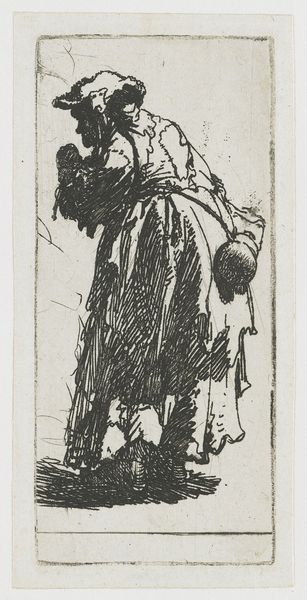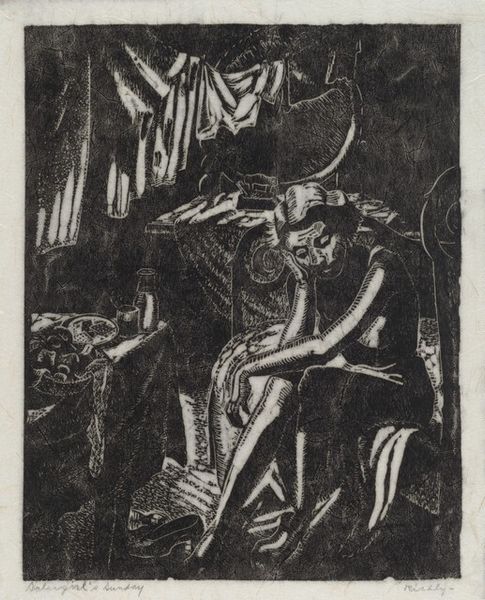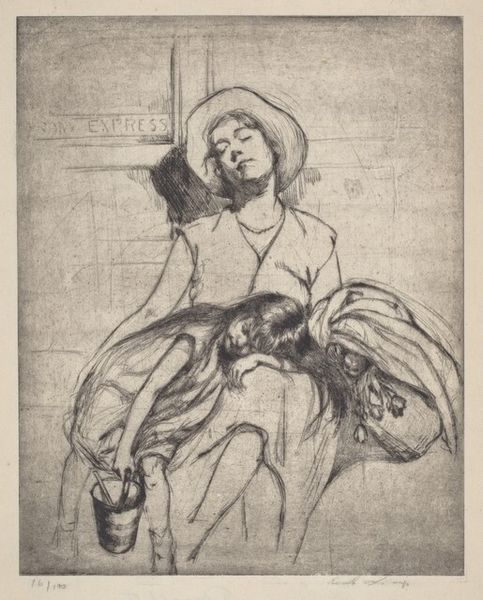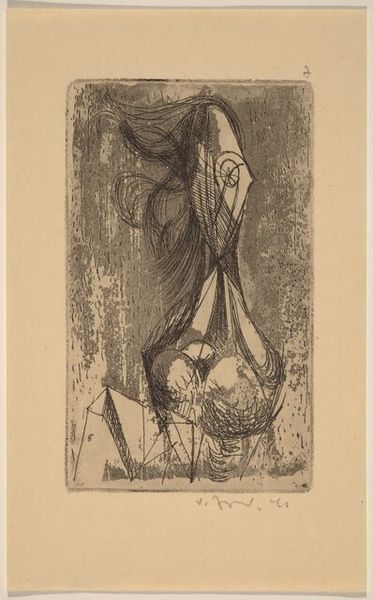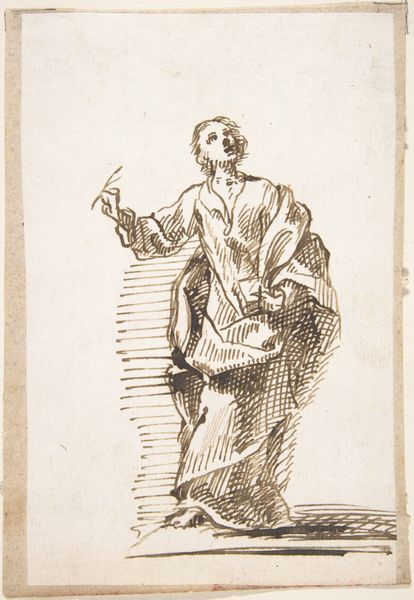
#
narrative-art
# print
#
figuration
Copyright: National Gallery of Art: CC0 1.0
Editor: Here we have “Woman and Peacock” by Bernard Reder. It's a print, so the texture is quite striking given the stark contrasts. The woman almost seems to be juggling the peacock. What do you make of this image? Curator: It immediately calls to mind the way women are often framed as being in service of beauty, symbolized here by the peacock. Are they controlling the narrative, or are they controlled by it? Consider, too, the historical contexts of printmaking. Who had access to these images, and what stories were they meant to convey? Editor: That’s an interesting point, considering the historical context, this printmaking style looks very Expressionistic… Curator: Exactly! The Expressionist movement, particularly in its engagement with printmaking, provided a space for critiquing bourgeois values. Does the positioning of the woman – almost enthroned, but also contained within the frame – offer a critique of such values? Consider who traditionally holds power. Editor: So you are saying the artist seems to offer both a position of privilege and potential subjugation simultaneously. I can see that duality here. Curator: Think about it this way: What narratives are centered, and whose voices are marginalized in visual culture? Consider the act of display itself – is the woman displaying the peacock, or is she being displayed? Editor: It does make me wonder about the woman's gaze. She's looking out at the viewer, almost as if complicit with this display. Thank you, I have new perspective. Curator: These images urge us to question not only the subject of art but also how that art interacts with systems of power. Art gives an alternative lens for our critical view.
Comments
No comments
Be the first to comment and join the conversation on the ultimate creative platform.

